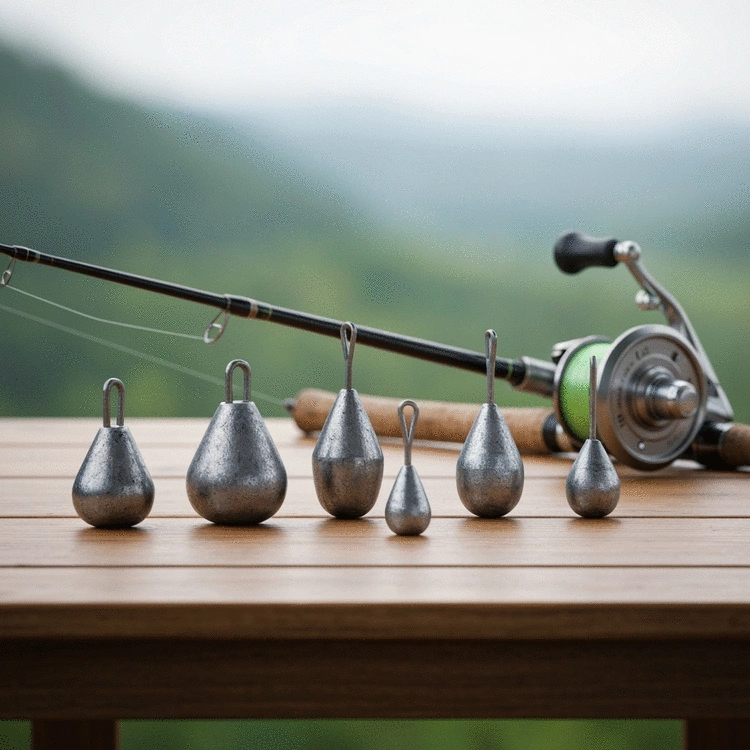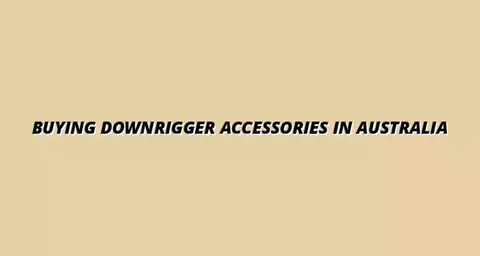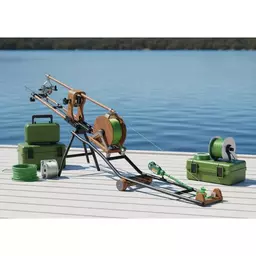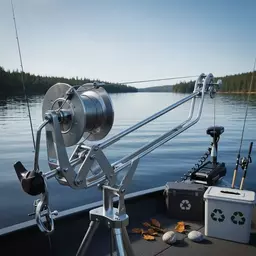What if a small adjustment to your fishing gear could increase your catch rate significantly? The right downrigger weight can make all the difference in your fishing success and enjoyment. Let’s dive into the essential insights that will elevate your angling experience.
What You Will Learn
- Choosing the appropriate downrigger weight is essential for effectively targeting specific depths where fish are abundant.
- Using a weight that is too light may not reach desired depths, while a weight that’s too heavy can lead to snags and lost equipment.
- Fishing conditions such as water depth, current, and wind significantly influence the weight you should use for optimal performance.
- Different fishing scenarios require varying weights—shallow waters may need 4-8 lbs, while deeper waters often require 20 lbs or more.
- Your trolling speed directly impacts weight selection; faster speeds generally require heavier weights to maintain lure depth.
- Understanding different types of downrigger weights and their materials can help you adapt to various fishing conditions effectively.
- Consider eco-friendly weight options to minimize environmental impact while still ensuring effective fishing.
Downrigger Weight Selection: Depth & Speed Influence
This visual summarizes the relationship between fishing depth, trolling speed, and the recommended downrigger weight to ensure effective lure presentation. Understanding these factors is crucial for enhancing downrigger success for anglers and making the most of your fishing trips.
Target Depth & Weight Relationship
Shallow Waters: 4-8 lbs
Mid Waters: 10-15 lbs
Deep Waters: 20 lbs+
Trolling Speed & Weight Needs
Slow Trolling: (1-2 mph) Lighter weights
Moderate Trolling: (2-3 mph) Medium weights
Fast Trolling: (3+ mph) Heavier weights
Weight Material Considerations
Lead: Affordable, effective, environmental risk
Cast Iron: Durable, less environmental impact
Eco-friendly: Lighter alternatives, can be pricier
Key Influencing Factors
Water Depth: Directly impacts weight choice
Current: Stronger current = heavier weight
Wind: Affects control, may need heavier
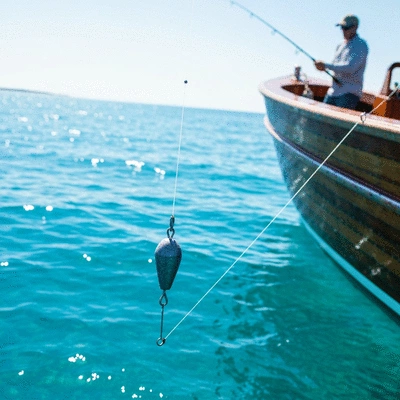
Understanding Downrigger Weight Selection for Fishing Success
Choosing the right downrigger weight is a crucial element in enhancing your fishing experience. When you have the appropriate weight, you can effectively target specific depths where fish are lurking. This not only increases your chances of a successful catch but also makes your time on the water more enjoyable! Think of weight selection as a key part of your strategy—without it, you might as well be casting a line into the void.
Proper weight selection can greatly impact your fishing outcomes. For instance, using a weight that’s too light might mean your lure doesn’t reach the desired depth, while a weight that’s too heavy could lead to snags and lost gear. It's all about finding the right balance to ensure that your bait is right where the fish want it!
Importance of Choosing the Right Downrigger Weight
When it comes to downrigger fishing, the right weight is your best friend. Using a weight that fits the conditions can greatly streamline your fishing process. Not only does it help in reaching the depths where fish are feeding, but it also contributes to a smoother trolling experience. For more tips on maintaining your gear, be sure to check out our article on downrigger care tips for anglers.
- Enhanced Depth Control: The right weight helps maintain your lure at the target depth.
- Improved Trolling Efficiency: A suitable weight reduces drag, allowing for a steadier speed.
- Higher Catch Rates: Being at the right depth means more fish bites!
In my experience, the right weight can turn a slow day on the water into an exciting fishing adventure. You’ll not only see more action but also feel more connected to the experience when you know you’re doing it right!
How Fishing Conditions Influence Weight Choice
Fishing conditions play a pivotal role in determining the weight you should use. Factors such as water depth, current, and wind can significantly influence how your downrigger performs. For example, deeper waters often require heavier weights to ensure your lure stays submerged, while lighter weights might be effective in shallower areas.
- Water Depth: Deeper waters typically need heavier weights.
- Water Current: Strong currents may necessitate a heavier weight to keep your lure down.
- Wind Conditions: Wind can affect your weight choice; a heavier weight can help maintain control.
Understanding these conditions is essential. I've often adjusted my weights based on current and wind, and I can tell you, it makes a world of difference! The more you adapt your weight to your environment, the better your chances of a successful outing.
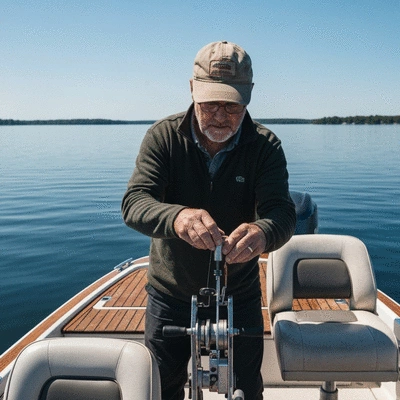
Factors to Consider When Selecting Downrigger Weights
Target Fishing Depth and Weight Relationships
Different fishing scenarios call for varying weights, especially depending on the target depth. For shallow fishing, lighter weights are often sufficient, while mid to deep water fishing typically requires heavier options.
- Shallow Waters: Use weights between 4-8 pounds.
- Mid Waters: Opt for weights around 10-15 pounds.
- Deep Waters: Heavier weights, such as 20 pounds or more, are essential.
This relationship between depth and weight is something every angler should know. I’ve found that sticking to these guidelines not only simplifies my setup but also maximizes my time on the water!
The Role of Trolling Speed in Weight Selection
Your trolling speed will also influence how well your downrigger performs and the type of weight you should use. Generally, faster speeds mean you'll need a heavier weight to keep your lure at the right depth and maintain stability.
- Slow Trolling (1-2 mph): Lighter weights can suffice.
- Moderate Trolling (2-3 mph): Medium weights are optimal for control.
- Fast Trolling (3+ mph): Heavier weights ensure the lure stays down.
Adjusting your weight according to speed has been a game-changer for me. It allows for more precise lure presentations, leading to better catch rates. Remember, the goal is always to keep your bait at the right depth, regardless of how fast or slow you’re moving!
Types of Downrigger Weights and Their Functions
There are various types of downrigger weights that serve different functions based on your fishing needs. Understanding the differences can help you choose the right one for your situation. For more detailed information on selecting downriggers for different conditions, explore our guide on selecting the right downrigger.
- Shape: Various shapes like cannonball or pancake affect drag in the water.
- Material: Options such as lead or cast iron have different properties.
- Weight: Choose weights based on the depth and species you’re targeting.
Having a selection of weights on hand has always helped me adapt quickly to changing conditions. I recommend working with various weights to see what works best for your style and the local conditions!
Lead vs. Alternative Materials: Environmental Considerations
While lead is a common choice for downrigger weights, it’s essential to consider the environmental impact. Alternatives are becoming increasingly popular, especially for anglers who want to minimize their ecological footprint.
- Lead: Effective but poses environmental risks.
- Cast Iron: A good alternative with less environmental impact.
- Eco-friendly Options: Options like rubber or other composites are emerging.
Choosing environmentally friendly materials is not only responsible but can also enhance your reputation as an angler who cares about sustainability. It’s a small change that can lead to significant benefits for our waters!
Understanding Fishing Weight Materials and Their Characteristics
Each weight material has its own advantages and disadvantages. Understanding these can help you make a well-informed choice for your downrigger setup.
- Lead: Pros include affordability and availability, but it’s heavy and has environmental concerns.
- Cast Iron: Offers good durability and is less harmful to the environment.
- Innovative Alternatives: Often lighter with varying benefits, though they can be pricier.
By weighing the pros and cons of each material, you can select weights that not only perform well but also align with your values as a responsible angler. Always consider how your choices impact the environment, as fishing is all about balance!
We Want to Hear From You!
How has your experience been with downrigger weight selection? What tips do you have for fellow anglers navigating different fishing conditions? Share your thoughts below:
Frequently Asked Questions About Downrigger Weight Selection
Q: Why is selecting the right downrigger weight important?
A: Choosing the correct downrigger weight is crucial for effectively targeting specific depths where fish are abundant. It helps ensure your lure reaches and stays at the desired depth, increasing your chances of a successful catch and improving overall trolling efficiency.
Q: What happens if I use a downrigger weight that's too light or too heavy?
A: A weight that's too light may prevent your lure from reaching the target depth, making it ineffective. Conversely, a weight that's too heavy can cause snags, lead to lost equipment, and make precise depth control difficult.
Q: How do fishing conditions affect downrigger weight choice?
A: Fishing conditions like water depth, current, and wind significantly influence weight selection. Deeper waters and stronger currents generally require heavier weights to maintain depth, while wind can also necessitate heavier options to maintain control and stability.
Q: What are the general weight guidelines for different water depths?
A: For shallow waters, 4-8 lbs are often sufficient. Mid-waters typically require 10-15 lbs, and deep waters often need 20 lbs or more to keep the lure at the desired depth.
Q: How does trolling speed impact downrigger weight selection?
A: Faster trolling speeds (3+ mph) generally require heavier weights to ensure the lure stays at the intended depth due to increased drag. Slower speeds (1-2 mph) might allow for lighter weights, while moderate speeds (2-3 mph) are best with medium weights.
Q: What are the environmental considerations for downrigger weights?
A: Traditional lead weights pose environmental risks. Eco-friendly alternatives like cast iron or other composite materials are becoming popular for anglers who wish to minimize their ecological footprint while still achieving effective fishing results.
Summarizing Key Insights on Downrigger Weight Selection
As we’ve explored throughout this article, selecting the right downrigger weight is crucial for fishing success. Understanding the interplay between fishing conditions, depth, and the type of fish you’re targeting can significantly impact your catch rate and overall enjoyment on the water. Here are the critical factors to consider:
- Weight Selection: The right weight ensures your bait is at the desired depth where fish are actively feeding.
- Fishing Conditions: Wind, current, and water depth all influence how your downrigger performs.
- Material Choices: Different materials, such as lead and eco-friendly options, come with their own set of advantages and environmental considerations.
- Trolling Speed: The speed at which you troll can affect how your lure behaves and, consequently, the weight you might choose.
Remember, experimenting with various weights and observing their impact on your catch can lead to valuable insights. Each fishing trip is an opportunity to refine your approach based on what works best for you!
Next Steps for Anglers: Putting Your Knowledge into Practice
Now that you have a solid understanding of downrigger weight selection, it’s time to take action! I encourage you to assess your current setups and experiment with different weights tailored to your fishing conditions. This hands-on experience is essential for honing your skills and increasing your success on the water.
Don’t forget to share your experiences with us! I’d love to hear how different weights have worked for you, or if you have any questions about optimizing your downrigger setups. Feel free to leave a comment below—let’s dive deeper into the world of downrigging together!
Recap of Key Points
Here is a quick recap of the important points discussed in the article:
- Weight Selection: The right weight ensures your bait is at the desired depth where fish are actively feeding.
- Fishing Conditions: Wind, current, and water depth all influence how your downrigger performs.
- Material Choices: Different materials, such as lead and eco-friendly options, come with their own set of advantages and environmental considerations.
- Trolling Speed: The speed at which you troll can affect how your lure behaves and, consequently, the weight you might choose.
